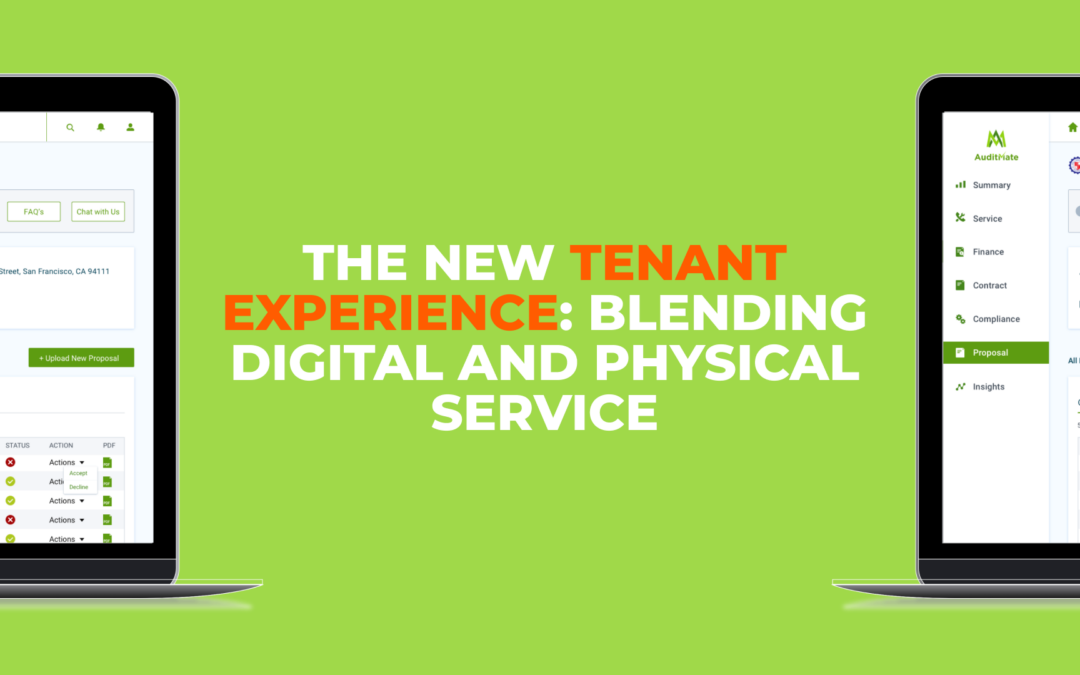Finding the right mix of services for tenants can be hard. Industry experts talk about how tech improves tenant experiences. This article will show you how to blend digital and physical services for tenants.
Understanding the New Tenant Experience
The way we work has changed dramatically since 2020, and there is no going back. Gone are the days when tenants would quietly accept a basic office with four walls and decent WiFi. Let’s face it: when people can work from their couch in their pajamas, they need a compelling reason to make that commute. What we’re seeing now—particularly in big cities—is a complete inversion of what makes an attractive office space. Tenants aren’t just looking for someplace to park their laptops; they need spaces that get their people feeling, “Yes, I’m actually looking forward to going into the office.”
With decades of industry experience, this professional understands what tenants want. An informal poll showed people value the experience first, technology second, and the physical space third.
Experience, technology, and physical space—in that order.
This shows building owners need to think about how they keep their buildings running well. Elevator maintenance is key here. When elevators work right, everyone is happier and safer.
It’s part of making sure tenants are satisfied with both the digital and physical parts of their office space.
Key Components of Blending Digital and Physical Services
Blending digital and physical services means making sure technology and real-world help work well together. This mix aims to make life easier for tenants, using online tools for better service while keeping the personal touch of face-to-face help.
Seamless service delivery models
Seamless service delivery models make things easier for both tenants and managers. Cloud-based platforms help everyone work together better. They let people share information fast, no matter where they are.
This way, building maintenance happens quicker. Tenants are happier because their needs are met without delay.
Digital tools play a big part here too. Mobile apps allow easy communication between tenants and those who run the buildings. This means issues get fixed faster. Plus, using these apps cuts down on mistakes and saves money.
For everyone in the building, life becomes more convenient and satisfying with these smooth services.

Enhanced accessibility and convenience
Moving from seamless service delivery models, making services easy to access and convenient is key. Streamlined online login processes make life simpler for tenants.
Now, they can do things quicker and with less hassle. This means getting into their accounts or using services without wasting time. Also, tenant experience apps bring people together in one place.
Even if they work far apart or follow a hybrid schedule, these apps connect everyone.
Property owners are trying out new tech like facial recognition for easier amenity access. This step pushes the door wide open for customer satisfaction by making everyday tasks smoother and more efficient.
Making services accessible and convenient transforms the way tenants live and work.
Role of Technology in Tenant Experience
Technology plays a key role in shaping the tenant experience. It brings digital tools and smart systems together, making life easier for everyone in the building.
Integration of digital tools for improved communication
Digital tools make talking and sharing info easy. Some integrated platforms combine features that help building owners communicate better with users spread across vast real estate portfolios.
These tools let tenants handle their living spaces on their phones. This is handy and saves time. Managers use a central digital spot for all chats. This makes life simpler for everyone who lives or works there.
Virtual amenities and smart building systems
Buildings get smarter with IoT and AI. These technologies watch over the building’s health. They can tell when something needs fixing before it breaks. This keeps tenants happy by preventing problems.
Solutions integrate smart strategies into buildings. Unified platforms make talking to tenants easy through digital tools, also giving them custom content.
Widely used tenant experience solutions appear in many top properties worldwide. Smart systems in buildings give tenants cool features without meeting face-to-face. They make life easier and keep everyone informed and connected.
Importance of Major Equipment Functionality
Keeping major equipment in top shape is key. It makes sure your building runs smoothly and safely every day.
Elevator reliability and maintenance
Elevators need to work well all the time. They must be safe and reliable. Good maintenance stops big repair costs and follows safety laws. Using data helps find problems before they get worse.
Proactive maintenance keeps elevators running smoothly, avoiding downtime and saving money.
Upgrading elevators makes them safer and better for everyone in the building. It also makes the building more valuable.
Building safety and security systems
Building safety and security systems are now smarter. They use IoT and AI. This makes buildings safer. For example, they have biometric checks, mobile keys, and role-based access control for who can enter what areas.
Sensors also catch odd changes in air or temperature.
AI is getting better at predicting problems before they happen. This means less risk of things breaking down or unexpected trouble. These smart systems help keep everyone inside safe and comfortable.
Benefits of a Balanced Tenant Experience
A balanced tenant experience brings happy renters. It leads to them staying longer, showing how good services pay off.
Increased tenant satisfaction
Happy tenants tend to stay longer. This is key for building owners and facility executives. Using tenant experience (TeX) software makes a big difference here. It gives insights on what tenants like and how they use amenities.
When things work well, from elevators to booking fitness classes, tenants are happier. They enjoy their space more.
Better tenant experience leads to higher satisfaction rates. Improvements in services such as safety systems and digital tools for communication help a lot too. Tenants appreciate easy access to what they need and feeling secure in the building.
This all adds up to tenants liking where they are, which is great for business.
Higher retention rates through better services
Offering better services leads to happier tenants. Happy tenants are more likely to stay longer. They also tell others about their good experiences. This can make more people want to rent in the same place.
Keeping spaces in good shape is key for this. If an elevator always works and the building feels safe, people will want to stay.
Giving small rewards for staying another year can also keep tenants happy. Things like lower rent for renewing a lease show them they matter. This helps keep buildings full and makes sure they keep making money.
Conclusion
The new tenant experience mixes digital and physical services to make things better for everyone. By using technology, buildings can now offer more without making it hard to use. This makes people who live or work there happier and more likely to stay.
So, building owners should keep mixing these services. This will keep tenants happy and make buildings better places to be.
FAQs
- What is the new tenant experience all about?
The new tenant experience is a blend of digital and physical service, creating an enhanced living environment for tenants. - How does blending digital and physical services improve the tenant experience?
Blending digital and physical services offers tenants convenient access to amenities, easy communication with property management, and seamless integration of technology in their homes. - Can this blended approach be applied to different types of properties?
Yes! The blended approach can be adapted for various types of properties — from residential buildings to commercial spaces — each tailored to meet specific needs. - Are there any challenges in implementing this new tenant experience?
While offering great benefits, implementing this blend might require significant investment in tech infrastructure, staff training, and continuous adaptation based on feedback. It’s a journey worth taking though!

